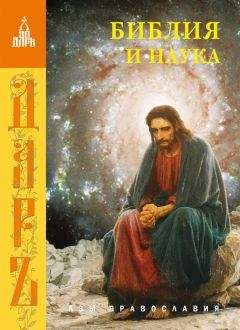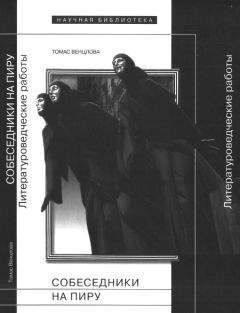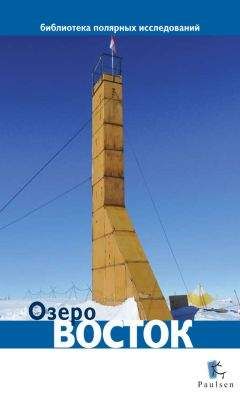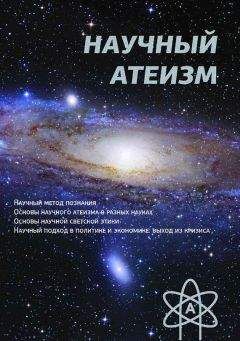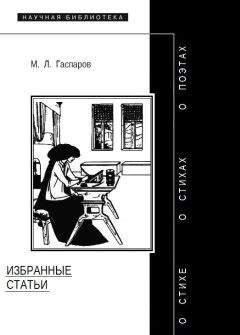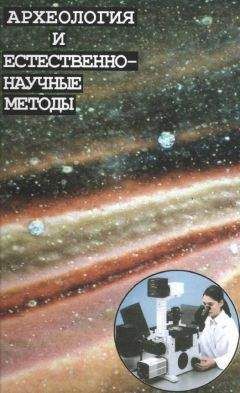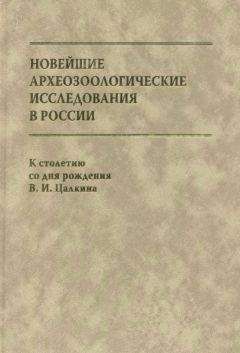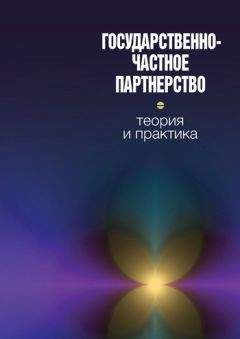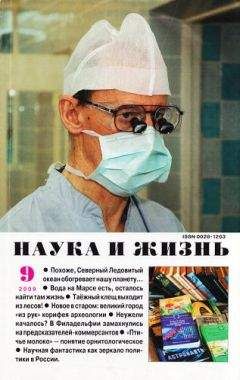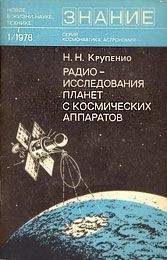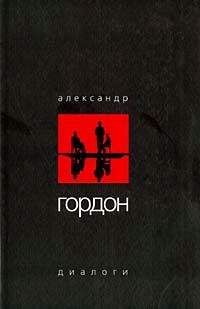В. Храковский - 40 лет Санкт-Петербургской типологической школе
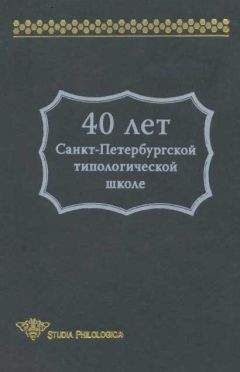
Скачивание начинается... Если скачивание не началось автоматически, пожалуйста нажмите на эту ссылку.
Жалоба
Напишите нам, и мы в срочном порядке примем меры.
Описание книги "40 лет Санкт-Петербургской типологической школе"
Описание и краткое содержание "40 лет Санкт-Петербургской типологической школе" читать бесплатно онлайн.
Сборник подготовлен в связи с 40-летием группы структурно-типологического изучения языков Института лингвистических исследований РАН и 95-летием со дня рождения основателя группы — проф. А. А. Холодовича. Статьи, включенные в сборник, посвящены следующим вопросам: теория диатез и залогов, проблемы синтаксиса разноструктурных языков, проблемы грамматической теории. Тематика статей отражает круг научных проблем, находившихся в центре внимания А. А. Холодовича, его учеников, последователей и всех российских и зарубежных лингвистов, связывающих себя с традицией Санкт-Петербургской типологической школы. Статьи подготовлены авторами на основе докладов, прочитанных на международной юбилейной конференции «Категории глагола и структура предложения», которая проходила в Институте лингвистических исследований РАН в мае 2001 г.
Literary sources usually point out the fact that these formatives are connected with the sphere of onomatopoeia and sound symbolism. Wilmanns [1896: 93,98], for instance, states that German verbs in — em chiefly denote repeated, rapid and brief movements, and aural and visual impressions of such movements, and «a large number of them are onomatopoeic formations [plätschem „splash“, stottem „stutter“, glitzem „glitter“)». Kluge [1913: 10] observes that Old Germanic verbs with the suffix — arôn (as in OHG flogarôn «flutter») always denote movement, noise and light.
The significant role of iconicity in RL-formatives is noted i. a. by Paul [1959: 119,121], Schmidt [1964: 122], Fleischer [1983: 321–322] for German, Hummelstedt [1939: 133], Wessén [Wessén 1970: 110] for Swedish, Rijpma, Schuringa [1971: 147] for Dutch. De Vooys [1967: 247], in his study of Dutch onomatopoeic and sound-symbolic expressivism, writes that «frequentatives» (iteratives) «could have been, from the very beginning… a product of what Paul called Uhrschöpfung».
Thus the sphere of Germanic iterative RL-formatives is vocabulary that in origin is iconic (words like those for sound, movement, light, speech, physical and emotional states are a prominent and universally acknowledged part of the iconic lexis), and the stems of RL-formatives are in origin iconic.
However, the iconic nature of the stem in these verbs is not sufficient ground to pass judgement on the nature and origin of the RL-formatives themselves. Some authors speak of their inherent iconicity. Marchand, for instance, observes: «Words in — er are compounds of several symbolic elements, one of which is final — er» [Marchand 1969:
273]; «Like — er, — le is not a derivative suffix proper from existing roots. <…> Many verbs have probably never had a simple root without the /l/ element…» [ibid: 323].
It is usually noted that modem Germanic RL-suffixes go back to West-Germanic and Scandinavian secondary suffixes (a result of metanalysis) with the determinatives — r-, — l-, OS, OHG — arô-, -aiô-;OIcel — ra, — la Guxman [1966: 201]; it is also noted that determinatives that belong to the compound secondary suffix are, in origin, — and this is important — part of the underlying stem — they actually are its final consonant Belyaeva [1965: 128]. We thus have in evidence two facts of the utmost importance: the iterative RL-formative is, in origin, part of the underlying stem; this stem is iconic in nature.
All this brings us to the conclusion: Germanic iterative RL-for-matives are iconic in origin, and their nature is iconic.
Surprisingly enough, this conclusion, so evident for the unbiased — and objectively the only one feasible — had not been formulated earlier, clearly and unambiguously.
Our conclusion re the Germanic RL-formatives is corroborated by «external» data from various other languages.
The cross-linguistic geography of RL-formatives is indeed impressive, all of them honouring one and the same macropattem.
Ramstedt [1952] stresses the fact that «Word formation in Altaic languages evinces a strong preference for onomatopoeic renderings». Ramstedt cites i. a. verbs in — ra, — la, — kira: Turkic jiltire «to glimmer, flicker», bürkä «to bum», titire «to tremble»; Mongolian burla «grumble»; sis-kire «to whistle» [ibid.].
For Turkish, Dmitriev [1962: 64f] discussed ut/ül/~ ït//il, ur//ür ~ïr//ir (e. g. in zïrïl «the purling or murmur of water» and cigir «the crunching of snow») as — again: nota bene — «final syllables of disyllabic mimemes» (i. e. iconic words. — S. V.). Importantly again, Fazy-lov [1958: 41, 70] for Tajik observes: «In origin, — ar//-ir//-ur are undoubtedly part of the iconic stem» as in guldurif) «rumbling» (with no *guld attested).
In general, it seems that Turkic tradition tends to regard verbs ending in r, / as disyllabic, and essentially underived (see e. g. [Xaritonov 1954: 167; Ščerbak 1987:129]).
For Buryat, Tsydendambayev [1958: 143] stresses that «in onomatopoeic words all endings… act as word-formation suffixes». For Nanaian, Kile [1973: 43] points out: «The interesting feature about the final endings of simple-stem iconic words is that they are as it were prototypes of word-formational suffixes. <…> In the word-formational suffixes — r-r, — ria-a, — riok and — riu-u we see the common element r, spawning all these variants».
In extensive RL adventures across world languages I came across a striking case of the R-formative in Karanga (Shona, a Bantu language). Its continuative verb forms take the suffix — ra/-ira/-era, reduplicated — rara/-irira/-erera: pota «go (in a curve)» — potera «go round» — poter-era «go round and round». The Karanga verb also has a «destructive», or «undoing» form in — ura, — urura: futa «swell» — futura «stretch out», pfura «knock, kick» — pfururura «knock out, scatter». V. Mathesius [1931: 427,432] was of the opinion that intensity may be expressed not only in the force of the action within a given period but also in the duration of the action, whether interrupted or uninterrupted. I would add here this snippet from Marconnes, with his telling examples: «Like the Destructive… the Projective (i. e. Continuative. — S. V.) — aira is intensive, and denotes a very long duration…» (Cf.)pfunda «make a knot» — pfundaira «knit one's brow, frown» — pfundarara «puff out one's cheeks» [Marconnès 1931:198]. The Karanga R-formative — not just the root — thus adopts various guises to suit iconic variation.
Jespersen [1928: 28] paid attention to the extremely important nature of the difference between monosyllabic iconic words, which express single sounds and movements, and disyllabic iconic words, denoting continuous sounds and movements; the latter are very often formed with suffixes — er and — le, employed thus in a multitude of languages, even outside the Aryan world. A similar observation was made, for Yakut, by Xaritonov [1954: 167]: «… in monosyllabic onomatopoeic roots, their very monosyllabism is a form of expression for momentary sounds. <…> Quantative complexity of sound, as well as its arrangement on the time scale, is rendered by augmenting the root». Cf. [Gazov-Ginzberg 1965:159].
Gonda [1940: 20If], in analyzing Malay/Indonesian onomatopoeic and sound-symbolic words with the iterative infixes — er- and — el-, proposes comparison of the latter with English and Dutch formations in, respectively, — er, — le and — eren, — elen.
Ever cautious with regard to the idea of onomatopoeia and sound symbolism, Gonda nevertheless arrives at the conclusion that the Malay/Indonesian — er-, -el- infixes are not grammatical morphemes — they are concomitant to imitating sound or movement, and their source (or at least one of their sources) may be a significant number of iconic words [ibid.].
In Sundanese, RL-formatives are an expression of the category of plurality — for verbs, adjectives, and sometimes nouns: dink «to sit (sg.)» — dariuk «to sit (pi.)», bodo «foolish (sg.)» — barodo «foolish (pi.)», budak «child» — barudak «children».
As I showed earlier, mostly for English, r in the onomotapoeic root is always (no exceptions) iconic, fulfilling onomatopoeic function of rendering «pure dissonance» — vibrating, intermittent sound, i. e. a series of rapid pulses Voronin [1969:1, 394]. A special series of studies on Indonesian onomatopes [Voronin, Bratoes 1976; Bratoes 1976; Bratoes, Voronin 1980] demonstrated i. a. that the same is true for r in the Indonesian root: see the CandPhil by Bratoes [1976: 5] written under my supervision. Data Voronin [1982: 115–118] based i. a. on RL-verb semantics as given in Bratoes [1976], point to the fact that in more than one third of the instances the R-formative fulfils only the above-mentioned one function. E. g. ker(e)tap «report (of a gun), explosion»: one complex sound («vibrant pulse») — the infixal r's function is onomatopoeic, the same function of rendering pure dissonance as that of the root r in e. g. ar «creak; trampling».
In a great number of cases we have the infixal r fulfilling the sound-symbolic function of simple repetition:
* * *Broadening the perspective, it was expedient to gauge the RL situation in some language typologically different from English and Indonesian. Closely linked to a series of typological studies (e. g. [Voronin, Lapkina 1977; Lapkina, Voronin 1979; cf. Voronin, Lapkina 1989]), was the CandPhil by Lapkina [1979], a postgraduate of mine, discussing onomatopoes in Bashkir (as compared to English). As in other Turkic languages, R-formations are a significant part of Bashkir onomatopoeic vocabulary. Usually the R-formative is seen in Turkology as conveying plurality, iteration, intensity (e. g. [Ašmarin 1928; Xaritonov 1954; Sevortian 1962; Xudajkuliev 1962; Išmuxametov 1970; Serebrennikov 1977]), thus imparting to the onomatope only a subsidiary, quantitative characteristic (not unlike the formative in English). Phonosemantic analysis, however, shows that, at least for Bashkir, this sound-symbolic function of r in the formative largely makes way for the qualitative onomatopoeic function of rendering pure dissonance. Consider thus supyr «(dial.) to bubble» denoting essentially an iteration of the instant sound of a stone going plop into the water, the latter rendered by the onomatope sup: the r's function is sound-symbolic; as opposed to this consider typyr in the sense «the rattling sound of machine-gun fire»: the r's function is onomatopoeic (like in tur «vibrant sound», with r part of the root).
Studies in a number of Germanic (English, German, Dutch), Turkic (Bashkir, Kirghiz, Chuvash) languages, as well as Malay/Indonesian, and Samoyed (Selkup) languages demonstrate that these formatives comprise a phonosemantically valid part of iconic word.
The evolution of RL is related to the process of denaturalization (the erosion of iconisity) in RL-formatives. This is best seen in r (the phonosemantically more powerful of the two sonants), discussed in the present paper. In root onomatopoeia, r is an important qualitative feature of the referent; it comes forth as the constituting element of an entire class of onomatopes («frequentatives»), first elicited in Voronin [1969]. It is the qualitative idiosyncrasy/exclusiveness of r that encompasses the very possibility of its development towards an element of nothing more than a quantitative characteristic of the referent: «dissonance, vibration, roughness, staccato nature, intermittence' — „iteration, plurality, prolongation, intensity“. And this possibility is widely used by the most diverse languages. The quantitativeness of the iterative R-affix germinates from the qualitativeness of the r-element in the phonetic structure of the onomatopoeic root word. What happens is the transformation of r from concrete qualitative characteristic of the referent, its „downgrading“ to an abstract quantitative characteristic (a de-qualification of r» s semantics, together with its quantification).
Thus, studies in a typological multeity oflanguages — i.a. Indo-European (notably English, also Tajik), Uralic (Selkup), Turkic (notably Turkish, Chuvash, Bashkir, Yakut), Mongolian (Buryat), Tun-gus-Manchu (Nanaian), Malay/Indonesian (discussed at some length in this paper) — warrant the conclusion that RL-formatives, in origin part of a simple disyllabic iconoc root word, comprise a potent iconic frequentalia in the sphere of expressing verbal plurality (multiplicativity). A detailed phonosemantic typology of RL-formatives is on the agenda.
I now conclude. Typologists have an impressive record of penetrating research in phonetic, semantic, functional-semantic, functional-grammatical typology. I suggest that they no longer turn a blind eye to cross-linguistic grammatical iconicity and phonosemantic typology. Mainstream linguistics will then — I warrant this — encounter a world hitherto unseen — a vast and mysterious world waiting to be unravelled.
ReferencesAlieva N. F. = Алиева H. Ф. Слова-повторы и их проблематика в языках Юго-Восточной Азии // Языки Юго-Восточной Азии. Проблема повторов. М., 1980.
Ašmarin I. N. = Ашмарин Н. И. Словарь чувашского языка. Казань, 1928–1929.
Bartko N. V = Бартко Н. В. Английские итеративные RL-глаголы и категория глагольной множественности // Категории глагола и структура предложения: Междунар. конф., посвященная 95-летию со дня рождения проф. А. А. Холодовича и 40-летию Лаборатории типологического изучения языков ИЛИ РАН: Тез. докл. СПб., 2001.
Подписывайтесь на наши страницы в социальных сетях.
Будьте в курсе последних книжных новинок, комментируйте, обсуждайте. Мы ждём Вас!
Похожие книги на "40 лет Санкт-Петербургской типологической школе"
Книги похожие на "40 лет Санкт-Петербургской типологической школе" читать онлайн или скачать бесплатно полные версии.
Мы рекомендуем Вам зарегистрироваться либо войти на сайт под своим именем.
Отзывы о "В. Храковский - 40 лет Санкт-Петербургской типологической школе"
Отзывы читателей о книге "40 лет Санкт-Петербургской типологической школе", комментарии и мнения людей о произведении.





